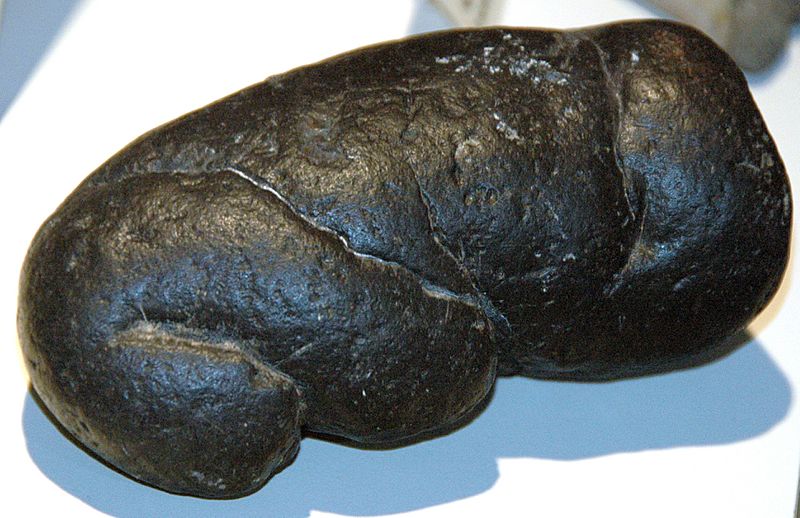Image: Giant white shark coprolite (Miocene; coastal waters of South Carolina, USA)

Description: Giant white shark coprolite from the Miocene of South Carolina, USA (public display, Dakota Dinosaur Museum, Dickinson, North Dakota, USA). Coprolites are fossilized fecal masses. They range in size from microscopic-sized pellets to moderately sizable dung piles. The most famous attributed examples are “Washington coprolites” from the Miocene Wilkes Formation of Washington State, USA. But these are now considered cololites (intestinal casts). True coprolites are fossilized dung. Thin sections of coprolites often reveal fragments of incompletely digested plant matter or sometimes undigested animal tissue. So, coprolite studies can provide information about the diet of ancient organisms, assuming the coprolite maker is known with some specificity (which is often not the case). This large coprolite is attributed to the extinct giant white shark, Carcharodon megalodon Agassiz, 1843 (Animalia, Chordata, Vertebrata, Chondrichthyes, Elasmobranchii, Lamnidae). Biogenic products are objects produced by ancient organisms. Many paleontologists refer to these as trace fossils, but they really aren't. Examples of fossil biogenic products include eggs, amber (fossilized tree sap), coprolites (fossilized feces), and spider silk.
Title: Giant white shark coprolite (Miocene; coastal waters of South Carolina, USA)
Credit: Giant white shark coprolite (Miocene; coastal waters of South Carolina, USA)
Author: James St. John
Usage Terms: Creative Commons Attribution 2.0
License: CC BY 2.0
License Link: http://creativecommons.org/licenses/by/2.0
Attribution Required?: Yes
Image usage
The following page links to this image:

